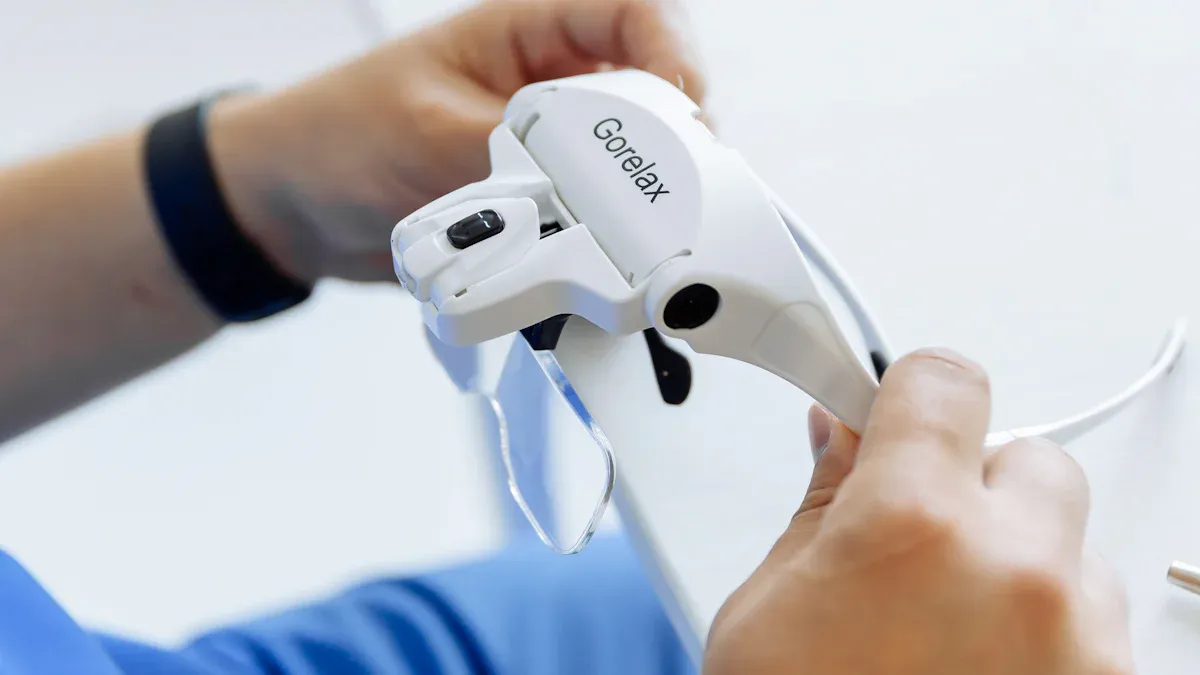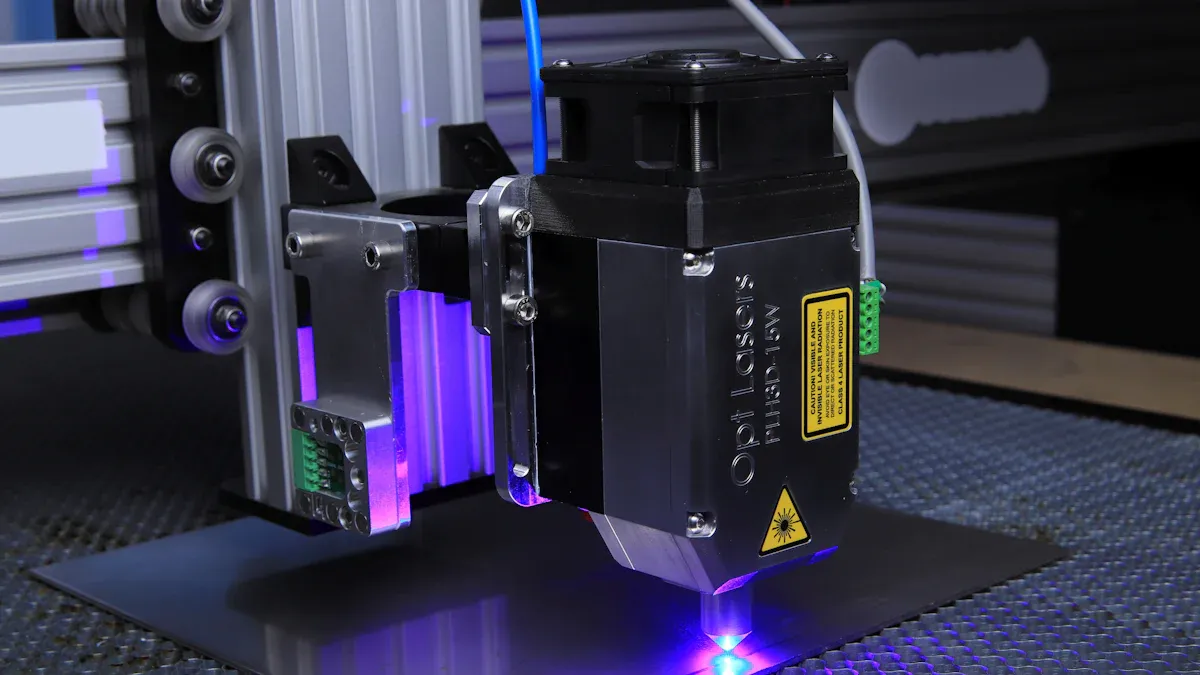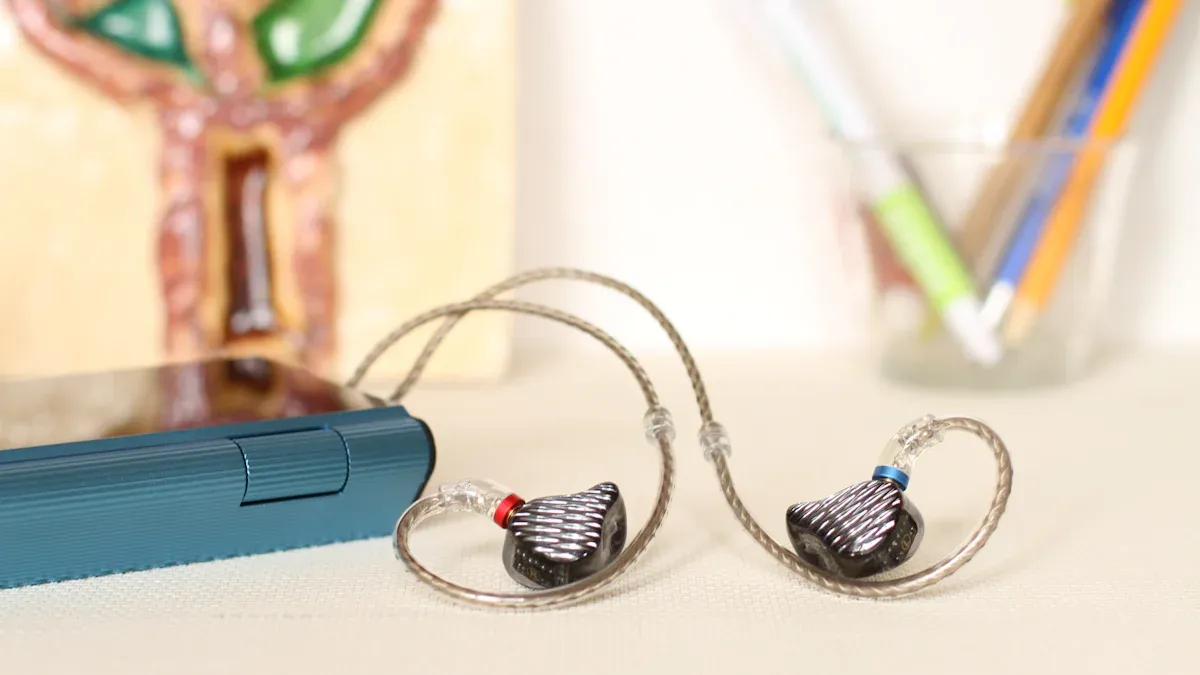How PET Heat Shrink Tubing Is Applied to Laser-Cut Medical Components

You use PET heat shrink tubing to cover medical parts, utilizing advanced PET heat shrink tubing laser cutting techniques to ensure precision. This tubing protects laser-cut medical components by providing a strong and thin layer that shields sensitive parts during device manufacturing. Many engineers choose PET for its ability to create smooth connections between parts, keeping devices safe from damage. PET helps medical devices function effectively inside the body. Using PET heat shrink tubing maintains the strength of medical devices, while PET heat shrink tubing laser cutting techniques offer exact control over the tubing’s fit and appearance. PET is a trusted material for medical applications and performs well with complex components.
Key Takeaways
PET heat shrink tubing keeps laser-cut medical parts safe. It gives a strong, thin, and bendy cover. The cover fits tightly and protects the device.
This tubing can handle heat, chemicals, and cleaning. It works with autoclaving and radiation. This makes medical devices last longer and work better.
PET tubing makes smooth seals and covers sharp edges. It stops leaks and keeps patients and devices safe during use.
You need the right size, careful heating, and good checking. This makes sure the tubing fits well and does not get damaged or wrinkled.
Following clear steps and keeping good records is important. This helps companies make safe and high-quality medical devices every time with PET heat shrink tubing.
PET Heat Shrink Tubing in Medical Device Manufacturing

Common Laser-Cut Components
Laser-cut parts are very important in making medical devices. These parts include stents, catheters, flexible tubing, cannulas, micro-cannulas, needles, biopsy tools, and other items for less invasive surgeries. Laser-cut hypotubes and braided catheter shafts are also used a lot. Modern lasers, like fiber and femtosecond lasers, help make these parts with great accuracy. These lasers cut fast and leave smooth edges, so you do not need much extra work. You can make thin and strong parts that fit well in tricky medical devices. PET heat shrink tubing goes tightly over these parts and keeps them safe during building and use.
Note: PET heat shrink tubing works well with both metal and polymer components, making it a top choice for many medical device manufacturing projects.
Key Applications
PET heat shrink tubing is used in many ways when making medical devices. It covers and insulates catheters, balloon devices, and other delicate parts. It helps bundle shapes, protect surfaces during coating, and make smooth tips on catheters and balloons. PET heat shrink tubing also gives electrical insulation, keeping parts safe from water and dirt. You can use it to join tubing, cover sharp edges, and give support to fragile parts. PET heat shrink tubing can handle tough cleaning methods, like autoclaving and gamma radiation, without getting weak or cloudy. Its clear look lets you check parts during building, so you can spot mistakes early. PET heat shrink tubing meets strict medical rules, like ISO 10993 for biocompatibility, so it is safe for devices that touch sensitive tissues. You can even get custom printed heat shrink tubing to help with labeling and tracking during manufacturing.
PET heat shrink tubing makes medical device manufacturing better by:
Giving strong insulation and protection for catheters and other parts.
Handling high heat and strong chemicals during cleaning.
Being flexible and shrinking to fit tricky shapes, which saves material.
Making medical devices safer and more reliable.
You can count on PET heat shrink tubing to be strong, accurate, and safe for all your medical device needs.
Properties of PET Heat Shrink Tubing
Strength and Thinness
PET heat shrink tubing is both strong and thin. It helps protect delicate laser-cut parts. PET keeps medical parts safe during use and cleaning. Ultra-thin wall PET heat shrink tubing covers small parts without making them bulky. This is important for devices that go inside the body or fit in tight spaces.
Scientists use different tests to check PET heat shrink tubing:
Tensile strength tests show how much force the tubing can take before it breaks.
Heat seal strength tests check how well the tubing sticks together with heat.
Coefficient of friction tests show how smooth the tubing’s surface is.
Thickness testers measure how thin the tubing is.
Heat shrink testers check how the tubing changes when heated.
Differential scanning calorimetry (DSC) shows how PET reacts to heat.
These tests show PET heat shrink tubing stays strong and keeps its shape. It works even after being heated or used many times. You can trust PET to make medical devices stronger.
Biocompatibility and Protection
PET heat shrink tubing is known for being safe for the body. Medical devices need materials that pass strict safety rules. PET passes ISO 10993 and USP Class VI tests. This means it will not hurt people when it touches skin or tissue. That makes PET a good choice for medical use.
You can use PET heat shrink tubing with many cleaning methods. It keeps most of its strength after being cleaned many times. This includes hydrogen peroxide and high heat cleaning. PET works with autoclaving, gamma radiation, and other ways to clean. Microbial lethality tests show PET heat shrink tubing helps kill germs. This is very important for keeping medical tools clean.
Manufacturers follow FDA and EU rules to make PET tubing safe. ISO 13485 and ISO 14644 make sure PET heat shrink tubing is made in clean places. Ultra-thin wall PET heat shrink tubing gives extra protection without making devices big. PET gives both strength and safety. This makes it the best choice for medical devices that need to be cleaned often.
Benefits for Laser-Cut Medical Parts
Smooth Transitions and Sealing
When you put PET heat shrink tubing on laser-cut medical parts, it covers sharp edges with a smooth layer. This helps keep the device and patient safe. PET makes a tight seal around catheters and balloon devices. It also seals other medical parts. You can use it to cover joints and seams. This stops leaks and keeps out germs. PET heat shrink tubing helps you bundle wires or small tubes together. This makes the device easier to use and safer.
PET heat shrink tubing gives a strong barrier. It keeps the inside of your device clean during sterilization. PET does not crack or peel, even after many cleanings. Your medical parts stay safe. PET also makes weak spots stronger. It adds support to catheters and balloon devices. This helps the device last longer and work better.
Tip: Always check if PET heat shrink tubing fits before heating it. This helps you get a good seal and a smooth finish.
Electrical Insulation and Chemical Resistance
PET heat shrink tubing is great for electrical insulation in medical parts. You can trust PET to stop short circuits. It protects sensitive electronics inside your device. The tubing keeps equipment safe, even where there is a lot of electromagnetic activity.
Here is a table that shows the technical properties of PET heat shrink tubing:
Property | Value |
|---|---|
Dielectric Strength | Greater than 4,000 V/mil |
Dielectric Constant | 3.3 |
Dissipation Factor | 0.0025 |
Volume Resistivity | 10^18 Ohm-cm |
Surface Resistivity | 10^14 Ohm/square |
Temperature Range | -196°C to 135°C (long-term), up to 200°C (short-term) |
Melting Point | 235°C |
Biocompatibility | ISO 10993 certified |
PET heat shrink tubing stands up to strong chemicals and cleaning products. You can use it during sterilization without worry. The tubing resists disinfectants and solvents. Your medical parts stay protected. PET keeps its shape and strength after many cleanings. You can use it for bundling, sealing, and protecting medical devices that need lots of cleaning.
PET heat shrink tubing:
Gives great electrical insulation for medical parts.
Works well after many sterilizations.
Stays strong against chemicals and UV light.
Helps your medical devices last a long time.
PET Heat Shrink Tubing Laser Cutting Techniques

When you use pet heat shrink tubing laser cutting techniques, you must follow careful steps. You want every part to fit well and stay strong. This process helps protect small medical parts and keeps devices safe for people.
Sizing and Fitting
First, you pick the right size of pet heat shrink tubing for your parts. The tubing needs to fit tightly over the laser-cut pieces before you heat it. If the tubing is too big or too small, it can hurt the parts or not seal right.
A good fit depends on the recovery ratio and how much the inner diameter shrinks. These numbers tell you how much the tubing will get smaller and how well it will hold your parts. The table below compares different tubing types and shows why pet heat shrink tubing laser cutting techniques are important for accuracy:
Parameter | Non-Crosslinked PEBA Heat Shrink Tubing | FEP Heat Shrink Fusing Sleeve (Comparative) |
|---|---|---|
Recovery Ratio (RR) | Ranges from >1.05:1 up to >1.5:1 | Typical for catheter reflow (not numerically specified, but higher recovery force implied) |
Inner Diameter Reduction (ID) | From about 4.8% up to about 33.3% | Not explicitly stated, but higher recovery force and temperature cause flow into interstices |
Heating Temperature | 300°F | 480°F |
Traverse Rate | 2.2 mm/s | 1.2 mm/s |
Effect on Laser-Cut Interstices | PEBA bonds to outer surface without flowing into interstices, preserving flexibility | FEP flows into interstices, reducing flexibility due to infiltration |
Example Hypotube Size | 5 French (0.065" OD) | Same |
Pet heat shrink tubing shrinks in a controlled way at lower heat. This helps keep your laser-cut medical parts flexible. Always measure your parts and tubing before you start. Use calipers or micrometers to check the outside of your parts and the inside of the tubing. This step makes sure you get a tight and even fit every time.
Tip: Try the fit with a sample piece first. This helps you avoid mistakes and wasting materials.
Heat Application Steps
After you size and fit the pet heat shrink tubing, you move to heating. This is where pet heat shrink tubing laser cutting techniques are very important. You want the tubing to shrink evenly without getting too hot or hurting your parts.
Follow these steps for best results:
Use a heat gun that lets you change the temperature. This helps you control the heat and not overheat the tubing.
Watch the temperature with a thermometer or infrared sensor. Keep the heat at the right level for pet heat shrink tubing, usually about 150°C.
Start heating at one end of the tubing. Move the heat slowly along the tubing’s length. This spreads the heat evenly.
Hold the heat gun the same distance from the tubing. This stops hot spots and uneven shrinking.
Gently pull the tubing along its length as you heat it. This helps the tubing shrink evenly around your parts.
Test your method on a spare piece of tubing first. Change your steps if you see any problems.
After shrinking, look at the tubing for damage or uneven spots.
If you heat pet heat shrink tubing too much, it can get brittle or melt. This can ruin your parts and make the device unsafe. If you do not heat it evenly, you can get loose spots or wrinkles. These make the tubing less protective.
Note: Always follow the maker’s rules for heat and technique. This keeps your medical devices safe and working well.
Inspection and Quality Control
When you finish shrinking the pet heat shrink tubing, you need to check your parts. Careful checking makes sure your pet heat shrink tubing laser cutting techniques worked as planned.
Look for these things:
The tubing should fit tightly and smoothly over all laser-cut spots.
There should not be any gaps, bubbles, or wrinkles.
The tubing should not look burned, discolored, or melted.
All joints and seams should be sealed.
The medical parts should still be flexible and strong.
You can use magnifying lenses or microscopes to find small problems. Some companies use machines to check even more closely. You should also test the finished parts for strength, flexibility, and electrical insulation. This step makes sure the pet heat shrink tubing did not change how your device works.
Tip: Write down your inspection results. This helps you keep track of quality and get better at pet heat shrink tubing laser cutting techniques.
By following these steps, you make sure pet heat shrink tubing protects your medical parts and keeps devices safe for people. Good steps and careful checking are important for making medical devices.
Practical Tips and Troubleshooting
Avoiding Common Issues
You may face some problems when working with pet heat shrink tubing on medical parts. If you see bubbles or wrinkles, you might have used too much heat or moved the heat gun too slowly. Always keep the heat gun moving and use the right temperature for pet. If the tubing does not shrink enough, check the size before you start. Pick tubing that fits closely over your medical part.
Sometimes, pet can become brittle if you overheat it. This can make your medical device weak. Use a thermometer to watch the temperature. If you see any cracks or burns, stop and try again with less heat. You should also check for gaps at the ends of the tubing. Gaps can let germs or fluids into your medical device. Make sure the tubing covers all sharp edges and joints.
Tip: Practice on a sample part before you work on the real medical device. This helps you learn how pet reacts to heat.
Ensuring Consistent Results
You want every medical device to meet high standards. To get the same results each time, follow a checklist. Measure your pet tubing and medical parts before you start. Use calipers to check the size. Write down the best temperature and time for shrinking pet.
Here is a simple checklist for medical device engineers:
Step | What to Do |
|---|---|
Measure | Check pet tubing and part sizes |
Fit | Slide tubing over medical part |
Heat | Use correct temperature for pet |
Inspect | Look for smooth, tight coverage |
Record | Write down settings and results |
If you see any problems, change one thing at a time. Try a lower temperature or a different size of pet tubing. Always inspect your medical device after shrinking. Use a magnifier to spot small flaws. Good records help you repeat your best results.
Note: Consistent steps and careful checks help you make safe, strong medical devices with pet heat shrink tubing.
You can make medical devices better by using PET heat shrink tubing with laser-cut parts. First, pick the right tubing for your part. Next, fit the tubing over the medical piece. Then, use heat so the tubing shrinks tightly. This keeps the device safe and strong. It also helps the device last longer. Each part stays clean and protected. Careful steps give you good results. If you work with tricky designs, ask a medical expert for help. You help keep medical tools safe for everyone.
Remember, paying close attention helps make every medical device safer and more reliable.
FAQ
What is PET heat shrink tubing used for in medical devices?
You use PET heat shrink tubing to cover, protect, and insulate laser-cut parts. It helps you create smooth transitions, seal joints, and keep medical devices safe during use and cleaning.
How do you choose the right size of PET heat shrink tubing?
You measure your medical part first. Then, you pick tubing with an inner diameter just larger than your part. The tubing should shrink tightly without gaps or wrinkles. Always check the recovery ratio before you start.
Can PET heat shrink tubing handle sterilization?
Yes, you can sterilize PET heat shrink tubing with heat, steam, or radiation. It stays strong and clear after many cleaning cycles. You do not need to worry about it breaking down during sterilization.
What should you do if the tubing wrinkles or bubbles?
If you see wrinkles or bubbles, you may have used too much heat or moved the heat gun too slowly. Try lowering the temperature and keep the heat gun moving. Practice on a sample first.
Is PET heat shrink tubing safe for use inside the body?
Yes, PET heat shrink tubing meets strict medical safety standards. It passes ISO 10993 tests for biocompatibility. You can use it in devices that touch skin or tissue.
See Also
Top Uses Of Ultrathin PET Heat Shrink Tubing In Medicine
Essential Facts About PET Heat Shrink Tubing For Electronics
Importance Of Ultra-Thin PET Heat Shrink Tubing In Healthcare
Significance Of Gamma Radiation Resistant Tubing In Medical Use

